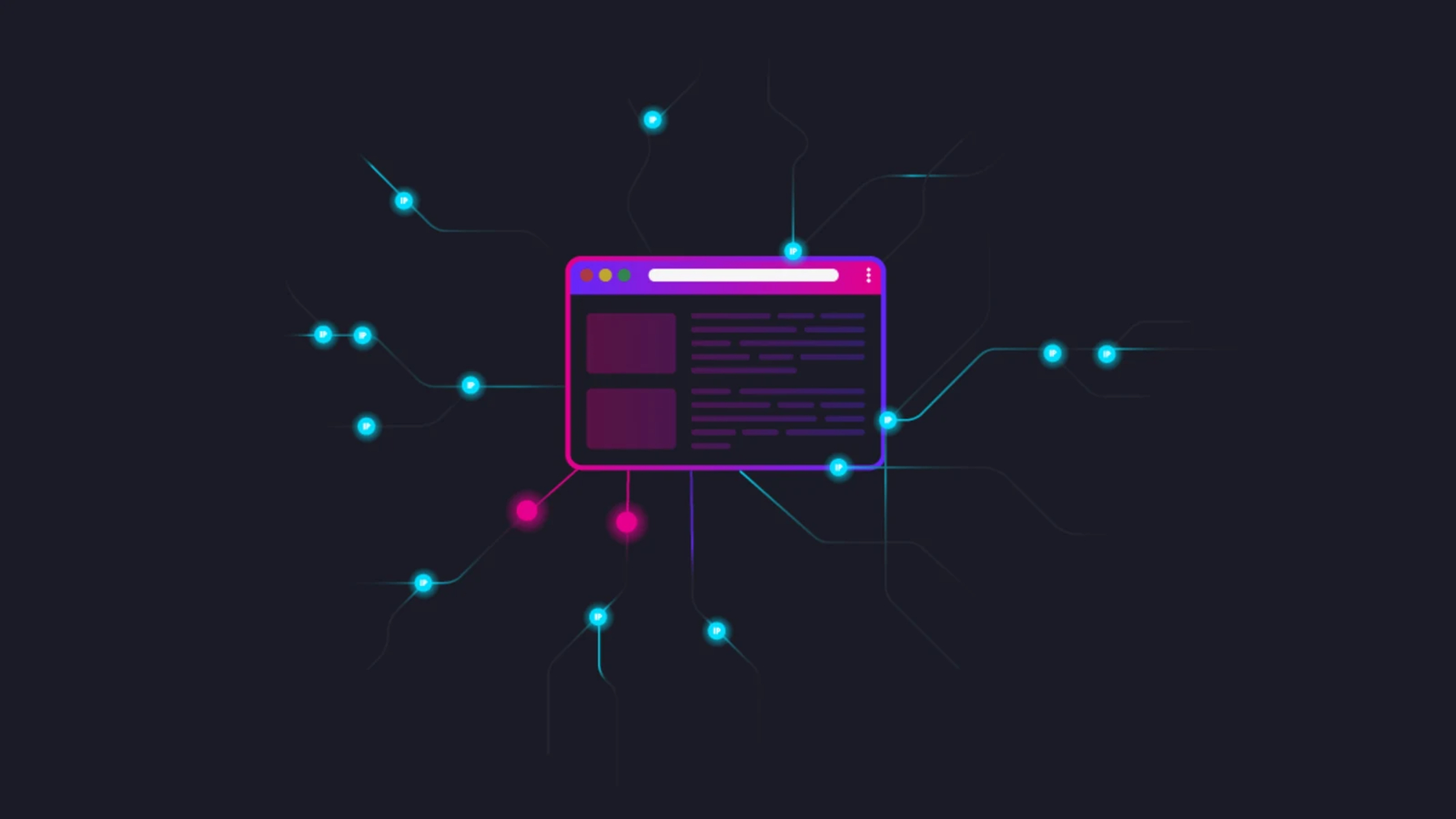Introduction
A headless browser is a tool that allows web browsing without the need for a graphical user interface (GUI). It retrieves and manipulates web pages just like a regular browser, but without the visual rendering. This technology has become increasingly popular among developers and SEO professionals due to its versatility and efficiency.
With a headless browser, developers can automate tasks, scrape data from websites, perform testing and debugging, and even simulate user interactions. It allows for seamless integration with other tools and frameworks, enabling powerful web automation workflows.
Traditional browsers like Chrome, Firefox, and Safari are built with graphical interfaces that are resource-intensive. They consume memory and CPU power to render websites visually. However, a headless browser operates in a lightweight mode, eliminating the need for GUI components and reducing resource consumption.
Headless browsers are typically used in scenarios where the visual presentation of a website is irrelevant or unnecessary. For example, when scraping data from websites, developers often only need the raw HTML or data parsing capabilities, without the need to render the web page visually.
In this article, we will explore the concept of a headless browser, how it works, its benefits, and various use cases. We will also discuss some popular tools and frameworks that support headless browsing, providing you with a comprehensive understanding of this powerful technology.
What is a Headless Browser?
A headless browser is a program or tool that allows browsing the web without a graphical user interface (GUI). Unlike traditional web browsers such as Chrome or Firefox, which have a visual rendering engine to display web pages, headless browsers operate in a command-line interface (CLI), making them more lightweight and efficient.
Headless browsers are primarily used for automated tasks and web scraping. They have the capability to retrieve web pages, interact with elements, and perform actions as if a user were browsing in a traditional browser. However, all the actions and interactions are performed programmatically, without any visual display.
One important aspect of headless browsers is that they fully support web standards and technologies. They can interpret HTML, CSS, JavaScript, and other web-related languages, allowing developers to manipulate and extract data from web pages with ease. This makes them useful for tasks such as data scraping, website testing, and web automation. With headless browsers, developers can extract specific data from web pages, simulate user interactions, and perform automated testing without the need for manual intervention.
By operating in a headless mode, these browsers consume fewer resources compared to traditional browsers. Since there is no need to render web pages visually, headless browsers are generally faster and more efficient in terms of memory and CPU usage. This makes them ideal for large-scale web scraping, where efficiency is vital.
Although headless browsers lack a GUI, they do capture screenshots and render PDFs of web pages, enabling developers to visually verify the results of their automated processes. This makes them a versatile tool for generating visual outputs and validating the correctness of automated tasks.
In summary, a headless browser provides all the functionality of a traditional browser but operates without a graphical interface. It allows for automated web browsing, data extraction, and web testing, making it an essential tool in the web development and SEO toolkit.
How Does a Headless Browser Work?
A headless browser works by utilizing a scripting interface to interact with web pages. It follows a series of steps to retrieve, manipulate, and process web content programmatically. Although the exact implementation may vary across different headless browser tools and frameworks, the general workflow remains consistent.
When a headless browser is initiated, it starts by establishing a connection to the desired web page or URL. It sends an HTTP request to the server and receives the corresponding response. This response includes the HTML, CSS, and JavaScript files needed to render the web page.
Once the response is received, the headless browser parses the HTML code, rendering it into a DOM (Document Object Model). The DOM is a hierarchical representation of the web page’s structure and content. It allows the browser to understand the relationships between different HTML elements, such as headers, paragraphs, images, and links.
With the DOM in place, the headless browser can execute JavaScript code embedded within the web page. This is crucial for web pages that rely heavily on dynamic content and interactivity. The browser can simulate user actions, such as clicking buttons, filling out forms, and navigating between pages, by executing JavaScript functions and manipulating the DOM accordingly.
Furthermore, headless browsers can extract data from web pages by targeting specific HTML elements using CSS selectors or XPath queries. This allows developers to retrieve text, images, links, or any other desired content from the web page. The extracted data can then be processed, analyzed, and stored for further use.
In addition to browsing and data extraction capabilities, headless browsers also have built-in support for capturing screenshots and generating PDFs of web pages. This feature is useful for visual verification of the rendered content and can be utilized in generating reports or documentation.
In summary, a headless browser works by establishing a connection to a web page, parsing its HTML code into a DOM, executing JavaScript functions, and manipulating the DOM based on simulated user interactions. It provides developers with the ability to retrieve web content, interact with web pages, and extract data programmatically, all without the need for a visual interface.
Benefits of Using a Headless Browser
Using a headless browser offers several benefits for developers and SEO professionals. Let’s explore some of the key advantages:
1. Efficiency and Speed: Headless browsers operate in a lightweight mode without a graphical interface, resulting in faster performance and reduced resource consumption. This makes them ideal for tasks that involve large-scale web scraping or testing.
2. Automation and Scalability: Headless browsers enable developers to automate repetitive tasks and perform actions programmatically. This saves time and effort, especially when dealing with complex scenarios or large datasets. Additionally, headless browsers can easily scale to handle multiple parallel operations, making them suitable for high-volume tasks.
3. Web Scraping: Headless browsers are widely used for web scraping, allowing developers to extract data from web pages efficiently. By navigating through various pages, interacting with elements, and extracting specific content, headless browsers enable seamless data collection for analysis or other purposes.
4. Compatibility: Headless browsers fully support web standards and technologies, ensuring compatibility with modern websites. They can interpret and render HTML, CSS, and JavaScript, enabling accurate extraction of data and interaction with dynamic web pages.
5. Testing and Debugging: Headless browsers are invaluable for website testing and debugging. They can simulate user interactions, validate functionality, and identify issues in a controlled and automated manner. This aids in improving the quality and performance of web applications.
6. SEO Analysis: Headless browsers provide SEO professionals with a powerful tool to analyze website content and performance. By extracting data such as meta tags, headings, URLs, and other relevant information, headless browsers can assist in optimizing web pages for search engines and enhancing overall SEO strategies.
7. Real-time Monitoring: With the ability to navigate through web pages and monitor specific elements, headless browsers can be used for real-time monitoring of websites. This includes tracking changes in content, analyzing website performance, and capturing screenshots for visual monitoring purposes.
Overall, the use of a headless browser offers increased efficiency, scalability, compatibility, and versatility for developers and SEO professionals. It empowers them to automate tasks, extract data, test websites, and optimize SEO strategies effectively.
Examples of Headless Browsers
There are several headless browsers available that cater to different use cases and programming languages. Let’s take a look at some popular examples:
1. Puppeteer: Puppeteer is a widely-used headless browser developed by Google. It provides a high-level API for controlling the Chrome browser in a headless mode. Puppeteer supports multiple programming languages like JavaScript and Node.js, making it accessible to a broad range of developers. It offers extensive functionality, including webpage navigation, DOM manipulation, screenshots, and PDF generation.
2. Selenium WebDriver: Selenium is a popular automation framework that also supports headless browsing. Selenium WebDriver allows developers to automate interactions with web pages and perform various tasks programmatically. It supports multiple programming languages, including Java, Python, and C#, and can work with different browsers like Chrome, Firefox, and Safari in a headless mode.
3. PhantomJS: PhantomJS was one of the earliest headless browsers and gained popularity for its simplicity and ease of use. It supports various features like webpage manipulation, resource monitoring, and screen capturing. However, it is worth noting that PhantomJS is no longer actively maintained, and developers are encouraged to use alternative options like Puppeteer or headless Chrome.
4. CasperJS: CasperJS is a navigation scripting and testing utility built on top of PhantomJS. It provides a simple and intuitive API for performing common web browsing tasks, such as filling out forms, clicking links, and capturing screenshots. CasperJS is particularly well-suited for testing and automation scenarios.
5. Playwright: Playwright is a relatively new headless browser developed by Microsoft. It supports multiple browsers like Chromium, Firefox, and WebKit, and offers cross-browser functionality. Playwright provides a high-level API for automating browser tasks and has gained popularity for its speed and powerful features.
These are just a few examples of the many headless browsers available in the market. Each offers its own set of features, language support, and capabilities. It’s essential to choose a headless browser that best fits your specific requirements and programming language preference.
Use Cases for Headless Browsers
Headless browsers find applications in a variety of scenarios, catering to the needs of web developers, QA testers, SEO professionals, and data analysts. Let’s explore some common use cases where headless browsers are highly beneficial:
1. Web Scraping: Headless browsers are widely used for web scraping tasks, extracting data from websites for analysis or data mining purposes. They can navigate through web pages, interact with elements, and scrape specific content, such as product details, news articles, or social media posts.
2. Automated Testing: Headless browsers are invaluable for automated testing of web applications and websites. They can simulate user interactions, perform regression testing, and validate website functionality. By automating the testing process, developers can ensure the quality and integrity of their web projects.
3. SEO Analysis: Headless browsers enable SEO professionals to analyze websites and optimize them for search engines. They can extract metadata, analyze page structures, identify broken links, and evaluate performance metrics. This information can be used to improve website rankings, enhance user experience, and implement effective SEO strategies.
4. Website Performance Monitoring: With headless browsers, it’s possible to monitor website performance in real-time. By regularly accessing web pages, measuring load times, and analyzing resource utilization, developers can detect bottlenecks, identify performance issues, and optimize website speed and responsiveness.
5. Data Analysis and Automation: Headless browsers can be utilized for automating repetitive data analysis tasks. By programmatically navigating and extracting information from multiple websites, they can gather data for market research, competitor analysis, sentiment analysis, and other data-driven tasks.
6. Capturing Screenshots and Visual Validation: Headless browsers can capture screenshots of web pages, allowing developers to visually verify the correctness of automated processes. This is particularly useful for generating visual reports, comparing before and after snapshots, and ensuring the proper rendering of web content.
7. Webpage Archiving: Archiving web pages for historical purposes is another use case for headless browsers. They can crawl websites, save HTML snapshots, and store them for future reference. This is helpful in preserving web content, tracking changes over time, and maintaining historical records.
These are just a few examples of how headless browsers can be utilized in various domains. The flexibility, efficiency, and automation capabilities offered by headless browsers make them indispensable tools for numerous tasks related to web development, testing, analysis, and monitoring.
Popular Tools and Frameworks for Headless Browsing
There are several popular tools and frameworks available that facilitate headless browsing and provide developers with the necessary capabilities to automate web tasks. Let’s explore some of the most widely used ones:
1. Puppeteer: Puppeteer, developed by Google, is a powerful and popular tool for headless browsing. It provides a high-level API to control the Chrome browser in a headless mode. Puppeteer supports JavaScript and Node.js and offers a rich set of functionalities for web testing, scraping, and automation.
2. Selenium WebDriver: Selenium WebDriver is a widely adopted automation framework for web browsers, including headless browsers. It provides a cross-platform, language-agnostic API for controlling browser interactions. Selenium works with multiple programming languages such as Java, Python, and C#, and supports various browsers in a headless mode.
3. Playwright: Playwright, developed by Microsoft, is a powerful headless browser automation framework. It supports modern browsers like Chromium, Firefox, and WebKit, and provides a unified API for performing browser actions. Playwright offers built-in support for headless mode and supports multiple programming languages, making it a versatile choice for automation tasks.
4. Nightmare.js: Nightmare.js is a popular high-level browser automation library that runs on top of Electron and uses the Chrome browser behind the scenes. It provides a simplified API for interacting with web content in a headless environment. Nightmare.js supports JavaScript and Node.js and is known for its ease of use and simplicity.
5. Headless Chrome/Firefox: Chrome and Firefox, the popular web browsers, also provide options for running in a headless mode natively. Both browsers offer comprehensive support for web standards and can be controlled programmatically using their respective DevTools protocols. This approach is suitable for developers who prefer working directly with the browsers without the need for additional frameworks or tools.
6. CasperJS: CasperJS is a scripting and testing utility built on top of PhantomJS. It simplifies the process of automating web interactions and offers a high-level API for navigation, form filling, and other common web actions. CasperJS supports JavaScript and is particularly well-suited for testing and automation scenarios.
7. HtmlUnit: HtmlUnit is a Java-based headless browser that provides the functionality to simulate browser behavior without creating a GUI. It supports HTML, CSS, and JavaScript, enabling developers to test and interact with web pages programmatically. HtmlUnit is commonly used in Java-based projects and automation workflows.
These tools and frameworks offer a wide range of features and support for different programming languages, making headless browsing accessible to developers of all backgrounds. Depending on your specific requirements, programming language preference, and desired level of abstraction, you can choose the tool that best suits your needs.
Conclusion
Headless browsers have revolutionized web automation, testing, and data extraction. They offer developers and SEO professionals a powerful toolset for navigating, interacting with, and extracting data from web pages in a headless environment.
By removing the need for a graphical user interface, headless browsers provide enhanced efficiency, scalability, and flexibility. They can automate tasks, perform web scraping, validate website functionality, and optimize SEO strategies with ease.
Popular tools like Puppeteer, Selenium WebDriver, Playwright, and others have simplified the process of using headless browsers, offering developers high-level APIs and multi-browser support. These tools provide extensive functionality, enabling developers to simulate user interactions, capture screenshots, generate PDFs, and extract data from web pages programmatically.
Headless browsers find applications in various domains, including web development, testing, SEO analysis, and data analysis. They allow for real-time monitoring, website performance optimization, and efficient data extraction for research and analysis purposes.
Whether you need to automate repetitive tasks, scrape data from websites, test web applications, or analyze SEO performance, headless browsers provide the necessary capabilities to achieve these goals. They eliminate the limitations imposed by graphical interfaces, offering developers a lightweight and efficient solution for their web automation needs.
As the web continues to evolve, the importance of headless browsing will only increase. With their efficiency, scalability, and compatibility, headless browsers empower developers to build robust applications, streamline workflows, and extract valuable insights from the web.

























